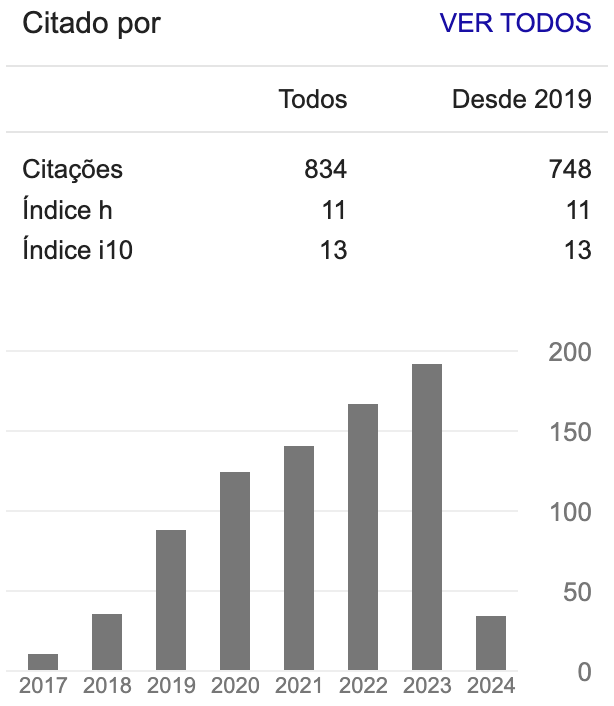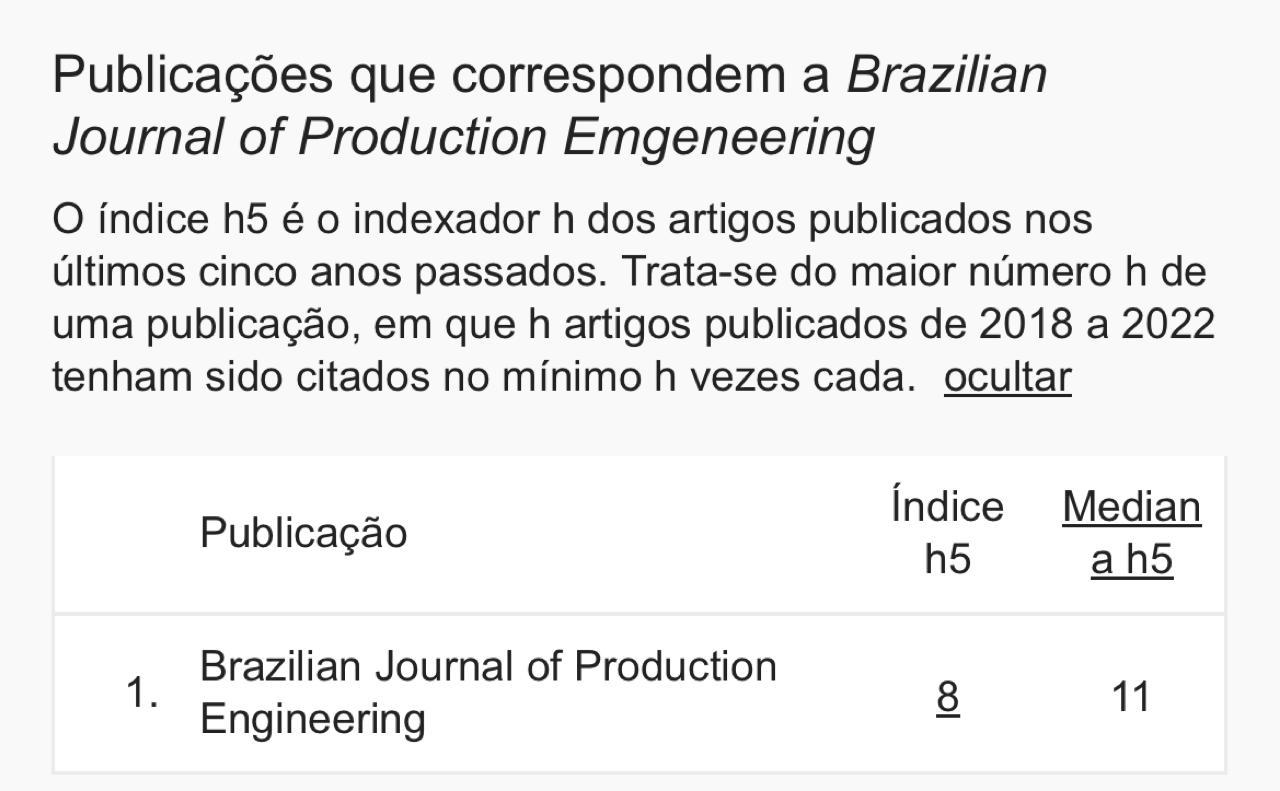Evolution of planted forests between 1986 and 2017: the Brazilian case of Peçanha, Minas Gerais
Keywords:
Rural producers, Cellulose industry, Forest fomentingAbstract
The massif forest market has been gaining prominence in Brazil, due to its participation in the economy. In Brazil, Minas Gerais State represents the largest planted forest area in the country and Peçanha municipality stands out for its wood production as well as for the insertion of its rural producers in the cellulose industry productive chain. This research aimed at mapping the evolutions of the planted forests in Peçanha, MG, from 1986 to 2017, presenting the forests planted by the private companies as well as the ones planted by the rural producers, integrated or not to the cellulose industry. The methodology of the research assumes an exploratory and a documental character, meaning a study case in which primary data were used obtained through interviews, and secondary data about the forest sector of the municipality, such as maps of the soil use and occupation, obtained from the MapBiomas Project of the IBGE and reports made by the cellulose industry. The results showed that there was an increase in the planted forest area and a decrease of grazing and agricultural areas, as well as an increase in wood production for cellulose industry and for the vegetal charcoal production, destined to the steelwork sector. It was concluded that the rural producer has been expanding the forestry areas, mainly over grazing and agricultural areas.
Downloads
References
Aquino, S. L. (2013) Estratégias empresariais e efeitos locais: a integração de pequenos agricultores à indústria fabricante de papel e celulose. Revista IDeAS, 7(Especial), 158-97.
Basso, V. M., Jacovine, L. A. G., Griffith, J. J., Nardelli, A., Alves, R. R., & Souza, A. L. (2012). Rural producer development programs in Brazil. Pesquisa Florestal Brasileira, 32(71), 321-334.
Canto, J. L., Coelho, F. M. G., Noce, R., Machado, C. C., Rezende, J. L. P., Mendes, L. M., & Oliveira, J. M. (2015). Social aspects of subsidized forest plantations in the state of Espírito Santo, Brazil. Cerne, 15(2), 123-132.
Celulose Nipo-Brasileira S. A. - CENIBRA. (2018). Plano de Manejo Florestal: resumo público 2018. Recovered in 21 march, 2018, in https://www.cenibra.com.br/wp- content/uploads/2018/04/2018PLANO-DE-MANEJO-FLORESTAL.pdf.
Celulose Nipo-Brasileira S. A. - CENIBRA (2019, 30 julho). Coordenação de Fomento Florestal - DESIL-F. Dados do fomento da CENIBRA. [mensagem pessoal]. Mensagem recebida por: .
Cordeiro, S. A., Silva, M. L., Jacovine, L. A. G., Valverde, S. R., Rocha, J. L., & Soares, N. S. (2009). Desempenho do fomento do órgão florestal de Minas Gerais. Cerne, 15(3), 273-281.
Cordeiro, S. A., Silva, M. L., Jacovine, L. A. G., Valverde, S. R., & Soares, N. S. (2010). Contribution of the public promotion of a forest of Minas Gerais in returns and risk reduction for rural producers. Revista Árvore, 34(2), 367-376.
Erthal, R. (2006). Os complexos agroindustriais no Brasil: seu papel na economia e na organização do espaço. Revista geo-paisagem, 5(9).
Espíndola, C. J. (2008, abril). A cadeia produtiva de frango de corte na América do Sul: considerações preliminares. Anais do 12o Encontro de Geógrafos da América Latina, Montevidéu, Uruguai, 3.
Farina, E. M. M. Q. (1999). Competitiveness and agribusiness systems coordination: a conceptual essay. Gestão & Produção, 6(3), 147-61.
Esta obra está licenciada com uma Licença Creative Commons Atribuição-NãoComercial-CompartilhaIgual 4.0 Internacional. Brazilian Journal of Production Engineering, São Mateus, Editora UFES/CEUNES/DETEC.
- 84 -
Citação (APA): Barbosa, R. A., Braga, G. B., Valverde, S. R., Vilela, K. F. V., Queiroz, C. S., Souza, P. B., & Gonçalves, W. (2020). The evolution of planted forests from 1986 to 2017: the brazilian case of Peçanha, Minas Gerais. Brazilian Journal of Production Engineering, 6(4), Edição Especial “Tecnologia & Inovação na Agricultura”, 72-84.
Fischer, A. (2009). The Furtherance in Forest Based Industry. Informe GEPEC, 13(2), 6-19.
Gonçalves, J. L. M., Ferraz, A. V., Rocha, J. H. T., Peressin, M., & Alvares, C. A. (2020). Forest outgrower schemes in small and medium-sized farmers in Brazil. Forest Ecology and Management, 456, 117654.
Graça, C. T., Reydon, B. P., Postal, A. M., Bueno, A. P. S., & Moreira, G. L. (2017). Governança de terras: da teoria à realidade brasileira (Cap. 14, 339-368). Brasília: Food and Agriculture Organization - FAO/ Secretaria Especial de Agricultura Familiar e do Desenvolvimento Agrário - SEAD.
Hilgemberg, E. M., & Bacha, C. J. C. (2001). A evolução da indústria brasileira de celulose e sua atuação no mercado mundial. Análise Econômica, 19(36), 145-164.
Instituto Brasileiro de Geografia e Estatística - IBGE. (2017). Produção da Extração Vegetal e da Silvicultura (SIDRA/Tabela 5930). Recovered in 22 october, 2018, in https://sidra.ibge.gov.br/tabela/5930.
Instituto Estadual de Florestas - IEF. (2018). Fomento florestal. Recovered in 9 november, 2018, in http://www.ief.mg.gov.br/index.php?option=com_content&task=view&id=58&Itemid=236.
Juvenal, T. L., & Mattos, R. L. G. (2002). O setor florestal no Brasil e a importância do reflorestamento. Recovered in 9 july, 2019, in https://www.bndes.gov.br/SiteBNDES/export/sites/default/bndes_pt/Galerias/Arquivos/conhe cimento/bnset/set1601.pdf.
Mengel, A. A., Aquino, S. L. (2011, novembro). Productive Integration in Family Farming: a debate on development prospects. Anais do I Circuito de Debates Acadêmicos, Brasília, DF, Brasil, 118.
Oliveira, P. R. S., Valverde, S. R., Coelho, F. M. G. (2006). Aspects of economic relevance in the forest promotion from the perception of the involved farmers. Revista Árvore, 30(4), 593- 601.
Paulilo, M. I. S. (1990). Produtor e agroindústria: consensos e dissensos: O caso de Santa Catarina. Florianópolis: Editora da UFSC e Secretaria de Estado da Cultura e do Esporte.
Projeto de Mapeamento Anual da Cobertura e Uso do Solo no Brasil - MapBiomas. (2019). Coleção v.3.1 da Série Anual de Mapas de Cobertura e Uso de Solo do Brasil. Recovered in 2 july, 2019, in http://mapbiomas.org/map#coverage.
Schmidt, V. D. B. (2003). Agricultura e Espaço Rural em Santa Catarina. Florianópolis: Editora da UFSC.
Silva, M. M. (2003). A fumicultura em Santa Catarina: discutindo a rentabilidade à luz das implicações sociais e econômicas. Agricultura e Espaço Rural em Santa Catarina. Florianópolis: Editora da UFSC, 99-123.
Soares, N. S., Valverde, S. R., Silva, M. L., Jacovine, L. A. G., Silva, A. G. Jr., & Lirio, V. S. (2007). Decisive of success and failure of a future contract of reforestation wood in Brazil. Scientia Forestalis, 35(76), 91-102.
Downloads
Published
How to Cite
Issue
Section
License
Copyright (c) 2020 Brazilian Journal of Production Engineering - BJPE

This work is licensed under a Creative Commons Attribution-NonCommercial-ShareAlike 4.0 International License.
Atribuição-NãoComercial-CompartilhaIgual
CC BY-NC-SA
This license lets others remix, adapt, and build upon your work non-commercially, as long as they credit you and license their new creations under the identical terms.






































































